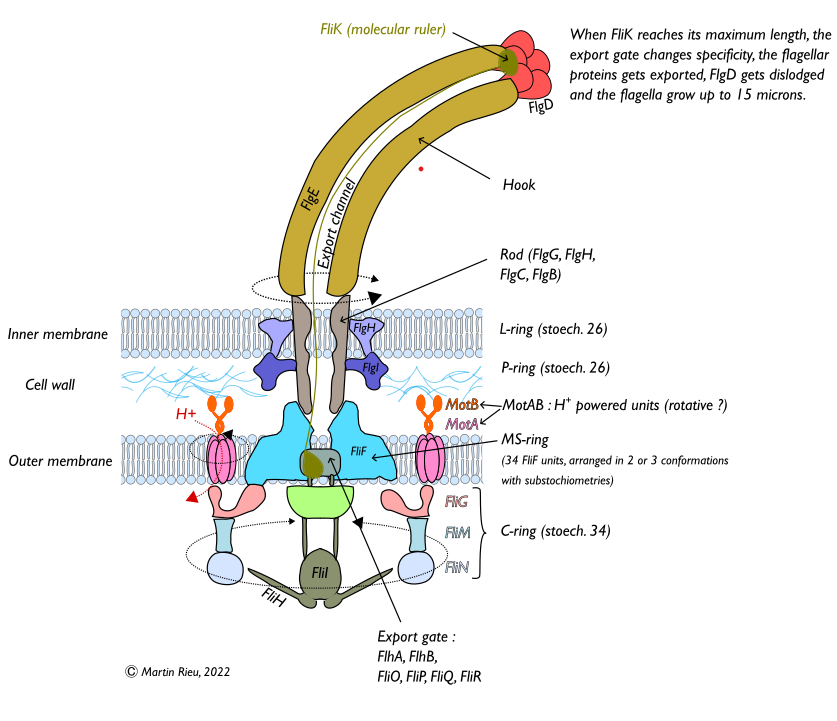After majoring in physics, I graduated with a PhD in experimental biophysics from the Université de Paris/Ecole Normale Supérieure in March 2021. My worked focused on developing super-resolution 3D microscopy to observe nanometric extension changes of DNA and RNA molecules under constant forces as well as helicase dynamics (molecular motors that unfold nucleic acids).
I joined the team of Richard Berry in October 2021 to work on the microsecond dynamics of the bacterial flagellar motor.
The Bacterial Flagellar Motor (BFM)
The bacterial flagellar motor is a fascinating biological nanometric machine which powers the movement of the flagella in many bacterial spieces.
Its complexity is stunning, especially when compared to its size (~ 40 nanometers) :
- it assembles inside the inner membrane of the bacteria, drills a hole in the rigid cell wall, and then grows an adaptor, the hook, and the flagella in the extracellular space.
- it is able to unfold, export, and refold proteins necessary to build the flagella outside of the cell.
- its construction is coordinated by a network of transcription factors which ensure its progressive building.
- when it's fully built it triggers the transcription of a class of genes which code for protein complexes able to transform the gradient of protons between the inside and the outside of the cell into a mechanical movement. Those proteins (MotAB on the picture below) dock close to the rotor and cause its rotation.
- in a few tens of minutes this nano-helicopter is fully built and propels the bacteria!
Cryo-electron microscopy (CryoEM) allowed extremely rapid progress in the understanding of this machine in the last ten years. However, since cryoEM requires freezing the motor at extemely low temperature (- 170°C), it can provide static images but can hardly describe the dynamics of the motor at room temperature.
With Richard Berry we develop polarization techniques to observe the microsecond dynamics of this amazing nano-machine.


